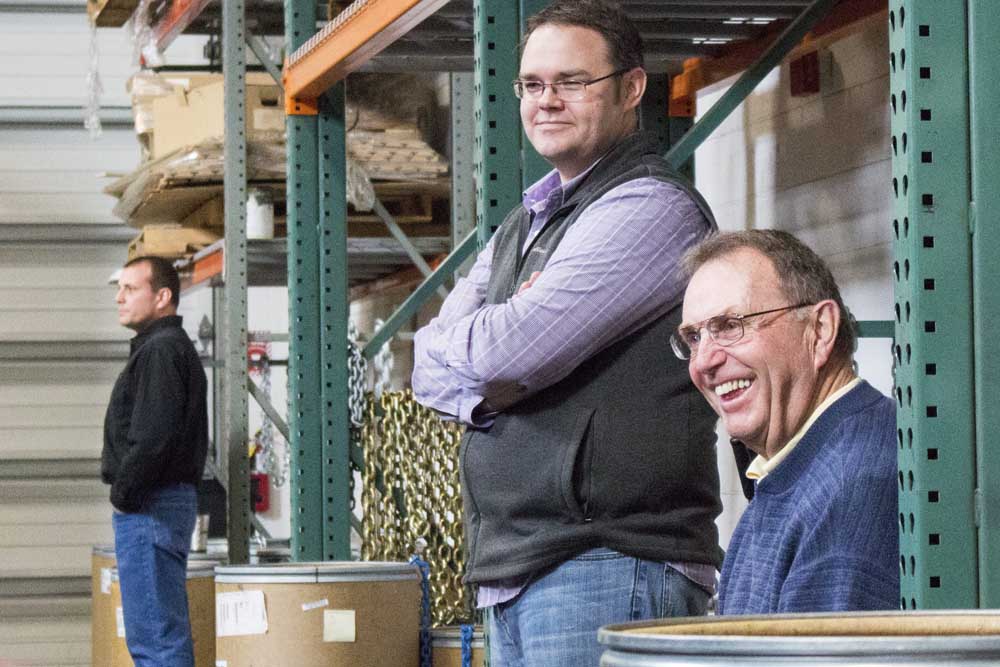‘Settling In’ Exhibit Focuses On Portland Immigrants Today And 100 Years Ago
Published 5:00 pm Thursday, May 16, 2013
![]()
Trending
Head of Neighborhood House Ida Loewenberg and Dr. Moore (top of stairs, left to right) in front of Neighborhood House with mothers of Well Baby Clinic in 1920
Americanization class at Neighborhood House, 1914
Trending
Nathan and Anne Director with their daughters Estelle, Zelda and May, 1923
Children in May Day Costumes, 1930
 Immigration and Refugee Community Organization (IRCO)
Immigration and Refugee Community Organization (IRCO)
Iraqi immigrant Lami Quayssar and his family
 Christie Hazen-Pixel Light Studio / Courtesy Oregon Jewish Museum
Christie Hazen-Pixel Light Studio / Courtesy Oregon Jewish Museum
Jo Din of Burma lived in a refugee camp in Thailand for more than a decade before immigrating to Portland.
 Christie Hazen-Pixel Light Studio / Courtesy Oregon Jewish Museum
Christie Hazen-Pixel Light Studio / Courtesy Oregon Jewish Museum
Eugene Sadiki from Congo
 Christie Hazen-Pixel Light Studio / Courtesy Oregon Jewish Museum
Christie Hazen-Pixel Light Studio / Courtesy Oregon Jewish Museum
Cuban immigrants Raymaris Acosta and her father Rafael Acosta Aranda
“What we’re trying to do is give immigration a human face,” says Oregon Jewish Museum Director Judith Margles about the new exhibit Settling In.
The exhibit explores two waves of immigration to Portland: Eastern European and Russian Jews in the early 1900s and recent immigrants from Burma, Cambodia, Congo, Cuba, Eritrea and Somalia. In addition, Settling In highlights two local organizations that helped immigrants in Portland: Neighborhood House assisted 2,000 Jews in the early 1900s and the Immigrant and Refugee Community Organization (IRCO) has helped tens of thousands of immigrants over the past 35 years.
Settling In features audiotaped interviews, pictures and artifacts that trace the immigrants’ arduous path to becoming Americans. The museum drew stories about the Jewish immigrants from its collection of 500 oral histories and interviews with descendants. From IRCO, five people and one couple were interviewed. The museum had a difficult time procuring artifacts from recent refugees, because many of them fled their homeland with practically nothing but the clothes on their backs, says Margles.
Although they come from vastly different geographies and cultures almost one century apart, according to Margles immigrants in both waves shared many of the same experiences. “The stories parallel each other more than they contrast,” she says.
Oregon Jewish Museum: Settling In
Through September 29, 2013
Oregon Jewish Museum, Portland
And the stories of Settling In are intriguing.
For example, one Portlander talks about going to the movies in 1920 and hearing whispers in the back of the theater. It turns out children were translating the movie into Yiddish for their parents. In another anecdote from that era, a Jewish mother was upset to learn that her son’s mouth was washed out with soap at school for improper language. She stormed into the principal’s office to say that the school was allowed to hit her son or yell at him, but she emphatically instructed the school never to put anything in her son’s mouth that was not kosher.
Other stories explore how immigrant families try to adjust to American parenting styles. Margles talks about one family from Burma who is finding ways to discipline their children without hitting them, which is one way children are raised in their homeland.
“They had to readjust how to raise their children and how to get the respect they wanted and be American at the same time,” explains Margles. “They were really worried that their children would get out of hand, because they knew they could no longer discipline them the way they wanted to.”
A former Somalian refugee describes how he is learning to explain the reasons behind his orders to his children.
“You are not forcing them to do things, but you are reasoning with them, you are explaining things to them,” says Salaad O’Barrow. In Somalia, children do not ask “why?” when their parents give orders, he says. But O’Barrow wants to adopt the ways of his new country. “We cannot live half here and half in Africa.”
Many immigrants’ stories describe challenges, and all do not have happy endings.
“We do have a number of terrific stories about immigrants talking about how it was heaven being in Portland,” says Margles. “But equally so, it was very, very challenging. Another person we interviewed said the roads are not paved with gold in America … The idea of what America represents when you’re not living here is very different once you’re here and on the ground.”
Margles says the exhibit is not polemical and does not address the current debate over immigration reform, but she does hope it will start a dialogue.
Settling In runs through September 29, 2013. The Oregon Jewish Museum will host discussions and films focusing on immigration during the exhibit’s run.
Correction – May 17, 2013: A previous version of this article stated that Neighborhood House assisted 12,000 Jews in the early 1900s. In fact, Neighborhood House assisted 2,000 Jews in the early 1900s. Also, a previous version of the slideshow stated that Eugene Sadiki was from Somalia. In fact, he is from Congo.
This story originally appeared on Oregon Public Broadcasting.












